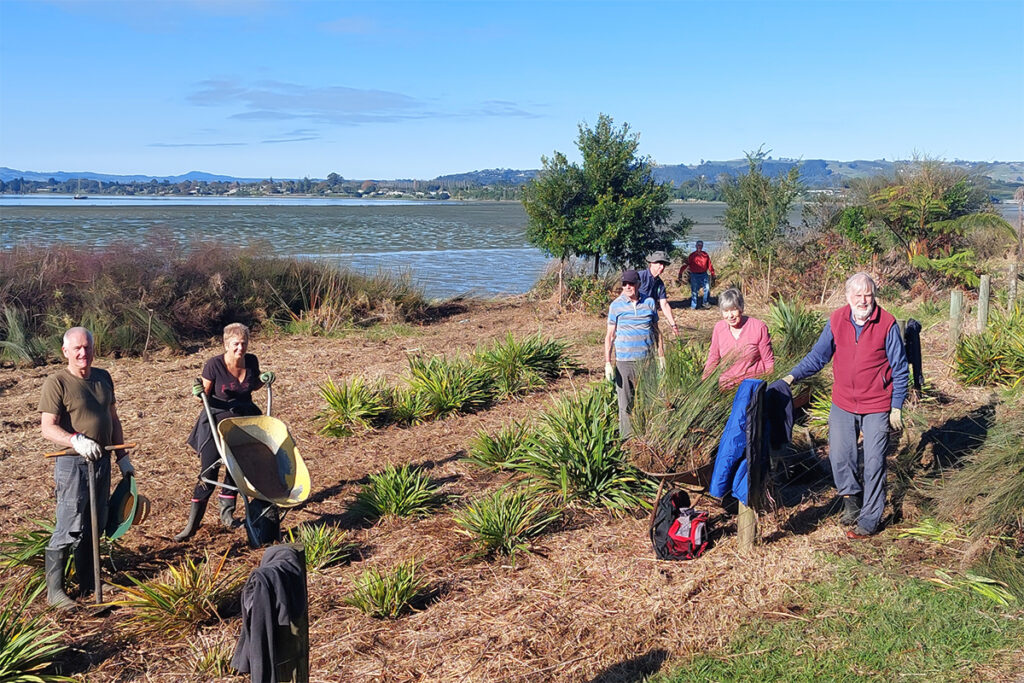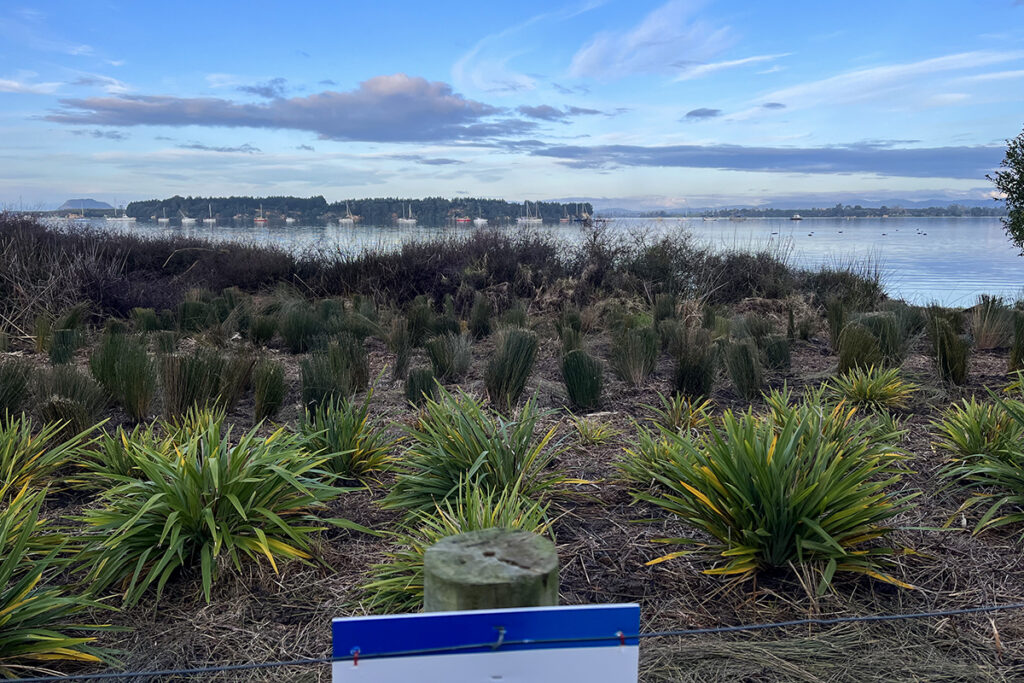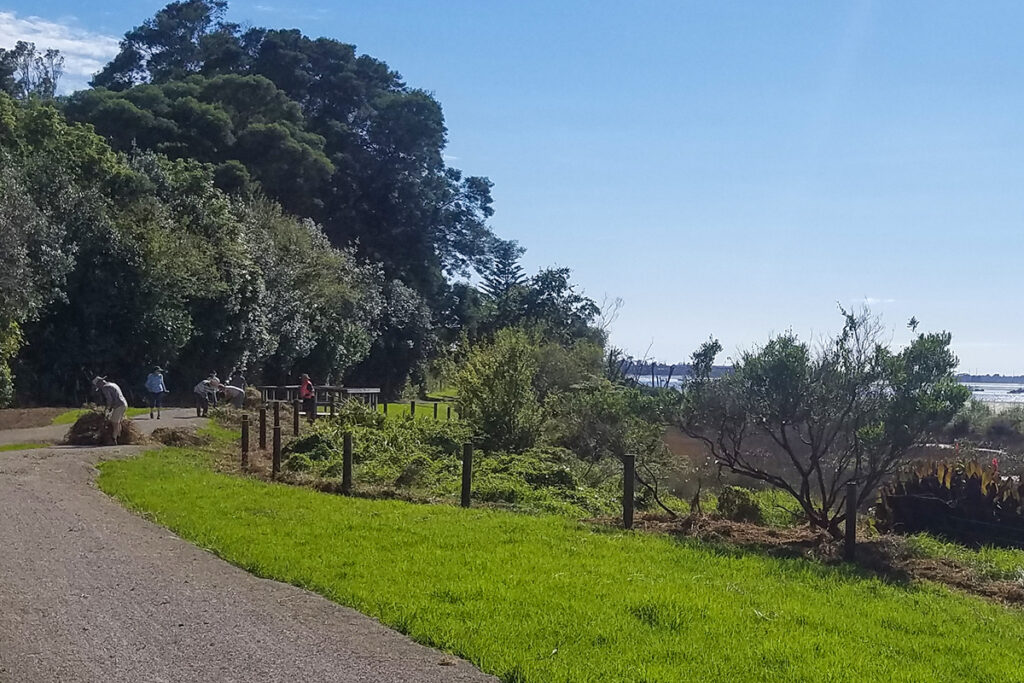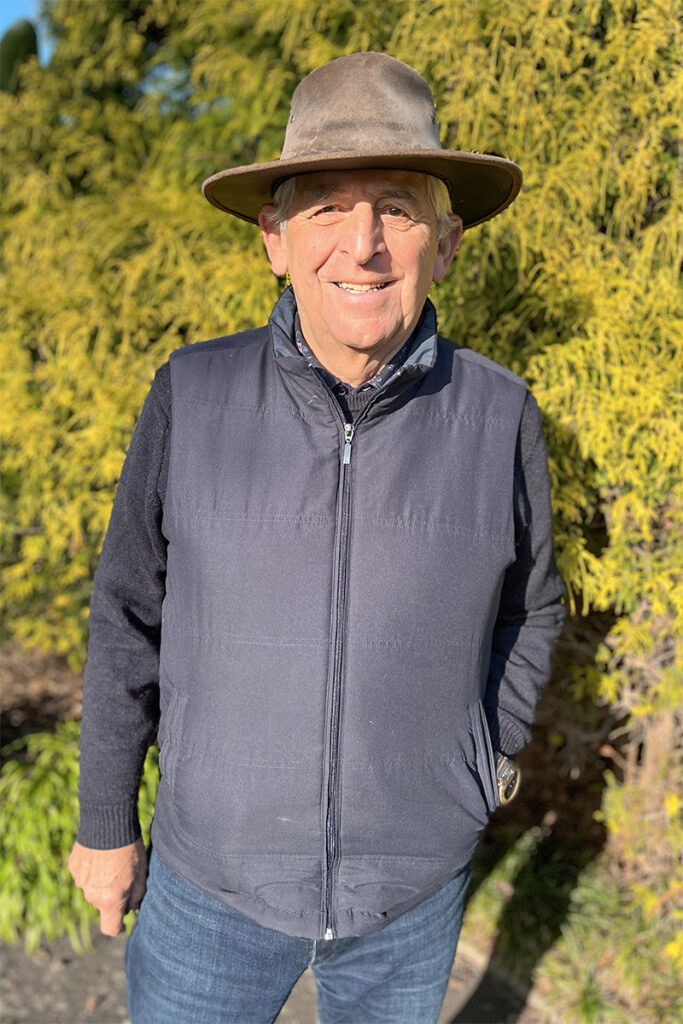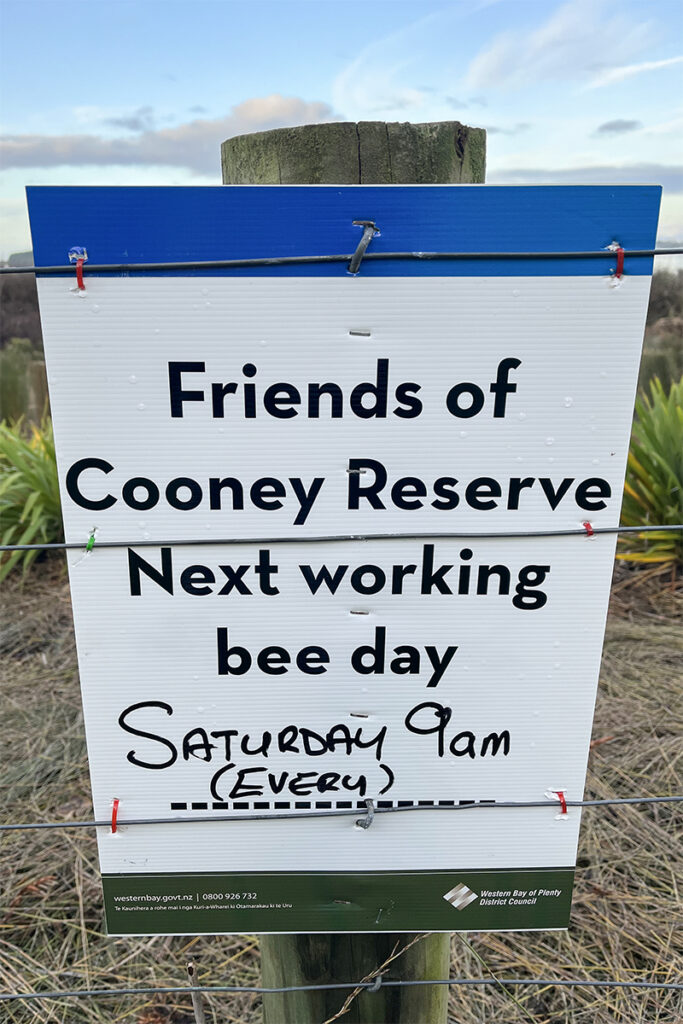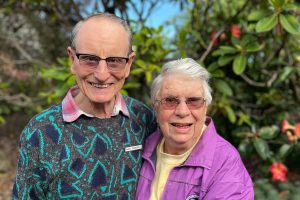At the beginning of this year, the view from Cooney Reserve along the foreshore in Omokoroa wasn’t a pretty one.
Thick gorse, blackberry bush, pampas grass, wild cherry trees and other noxious weeds were strangling the trees and killing the bush, and the water view was completely obscured in places.
But six months later it’s a different story – all thanks to one man’s vision and an enthusiastic group of local volunteers.
Omokoroa Country Estate resident Chris Cole started a community group called ‘Friends of Cooney’ in January to transform the 1km-long reserve into a landmark Omokoroa can be proud of.
“The new Omokoroa-Tauranga cycleway ends up in Cooney Reserve. My dream is that it will become a real focal point for Omokoroa with picnic tables, toilet facilities and a huge carved Māori entranceway that we’d love to work with local iwi on.”
Chris says some of New Zealand’s most iconic places have been created out of nothing. “I was involved in starting the cycleway network in Hawke’s Bay many years ago and we transformed a rundown area that has now become a focal point. I want to do the same thing here.”
Cooney Reserve is a haven for nesting birds including godwits, pied oyster catchers, dotterels, black stilts and more. On any given day, thousands of birds can squeeze themselves onto the narrow sand dune that runs along the harbour’s edge.
“It’s a huge bird roosting area for many different species. The sand bar can be absolutely full of birds and it’s quite an amazing sight. Thousands of godwits travel to and from Siberia and they come back to the identical spot they left the year before. It’s just fascinating. I would love to hold a godwits festival here in future to welcome the birds back in spring.”
Volunteers (including many from Omokoroa Country Estate) have worked hard over the past few months to remove unwanted plants and replace them with more suitable species. Western Bay District Council has supplied mulch, oioi grass, flax, and other plants which volunteers have dutifully planted during a series of working bees as well as in their own time.
“We’ve sprayed the grass and completely cleared the fence lines. It was all overgrown and a big mess. Trees used to be covered in moth plant. We had to climb up ladders to pull it all down. We found infestations all over the place and it was killing the bush. Our aim is to make Cooney Reserve an attractive place once again so people using the cycleway or locals can come and enjoy the view.”
Baby rimu trees are now carefully marked out and Friends of Cooney are working to increase signage and improve gates to keep dogs away from the birds. Chris would love to bring more sand in to build up the sand banks and has applied for grants to build ‘bird hide’ shelters so people can watch the birds up close without scaring them away.
“I also want to plant kahikatea for heron to nest in. We’ve done a huge analysis of what trees and shrubs different bird species require for feeding and nesting.”
Chris credits his enthusiasm for bird life and botany to books he received from his father as a child. “My father was in the British Army, and I grew up in Egypt, Cyprus, Malta, and Germany. When I was 12, he gave me an ‘Eye Spy Birds’ book and an ‘Eye Spy Trees’ book and told me to go out and find as many as I could. I have retained an interest in birds and trees ever since!’’
Omokoroa primary school children also stand to benefit from Chris’ knowledge, as he’s keen to start an education programme connected to Cooney Reserve to teach youngsters about bird species and migration, among other things.
Anyone interested in joining Friends of Cooney and getting involved in restoration efforts is welcome to turn up at 9am on Saturday morning working bees to help out. White notice boards are placed on the Cooney Reserve fence line indicating when and where these will be held.
